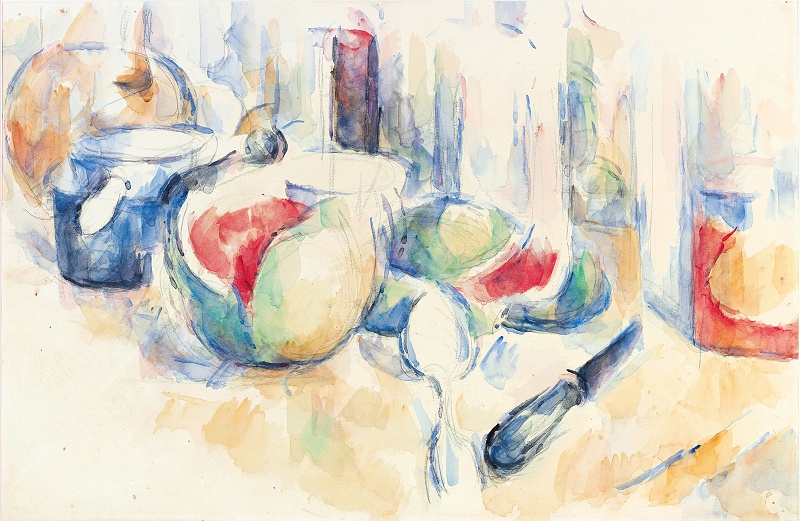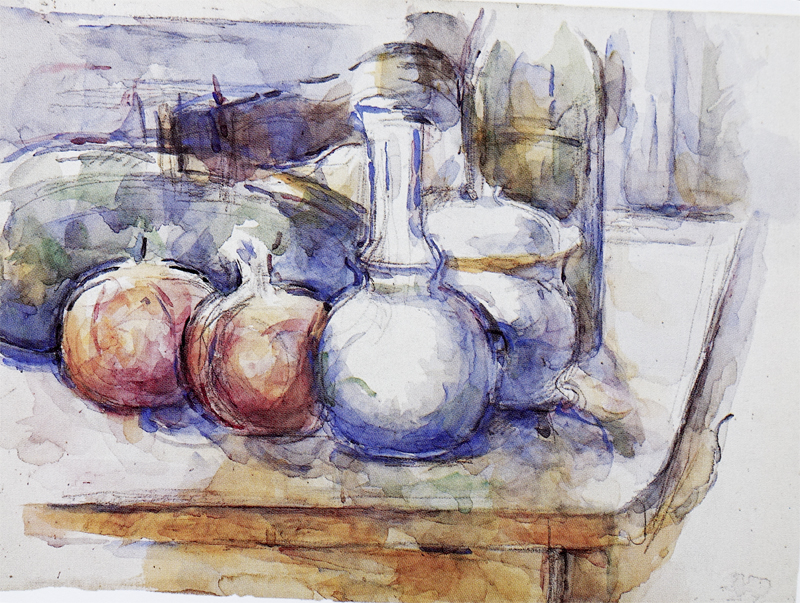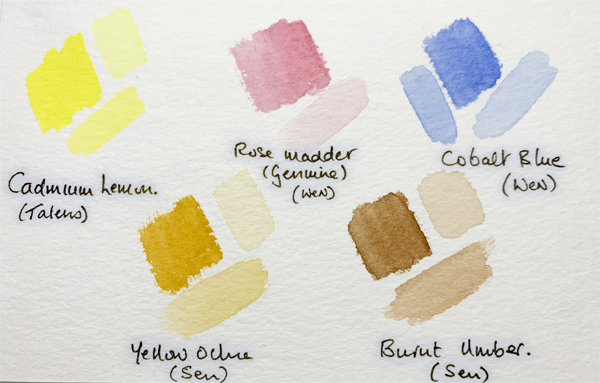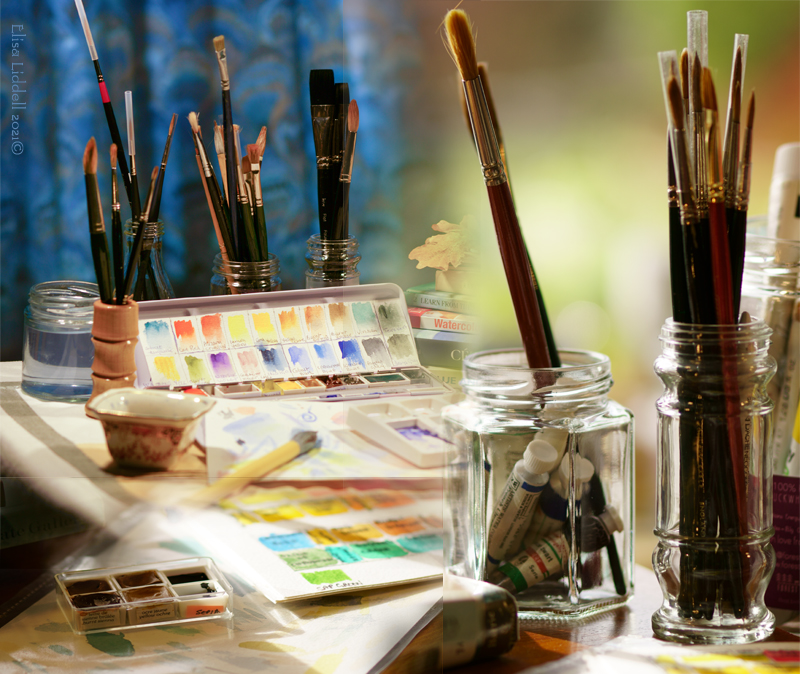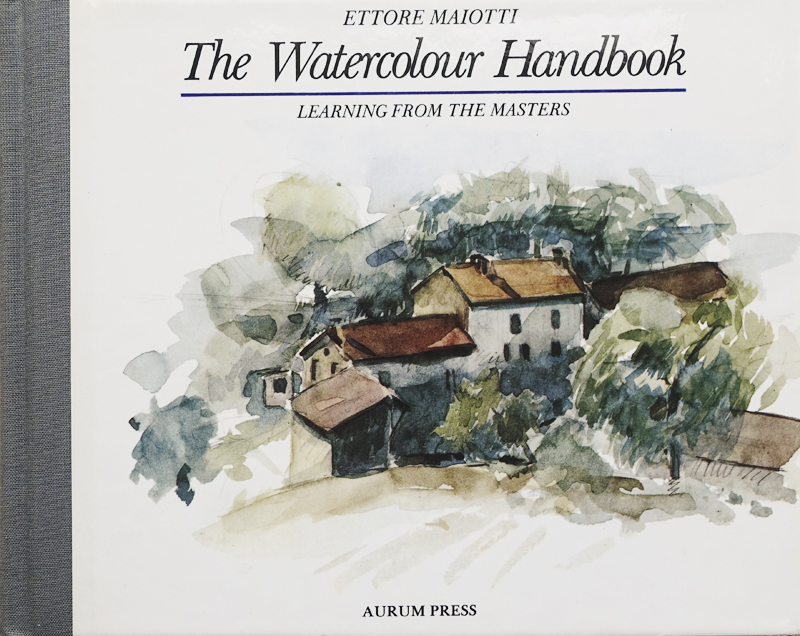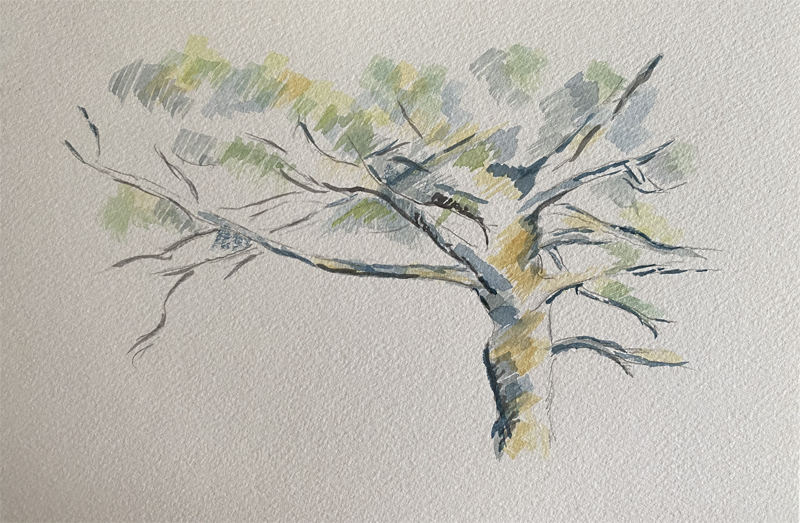
COPYING CEZANNE
So – I had discovered the palette of just 3 colours that Cezanne used. I modified it a little to include yellow ochre and burnt umber, and added Payne’s Grey myself. But essentially I had the colours to start copying the master. I only had photographs in books or online to guide me, so the colours might not be exact, but close enough for my purposes. I also discovered the brushes he favoured, both flat and round.
I wanted to keep in mind the 3 qualities I admired – minimalism, light, and his use of colour.
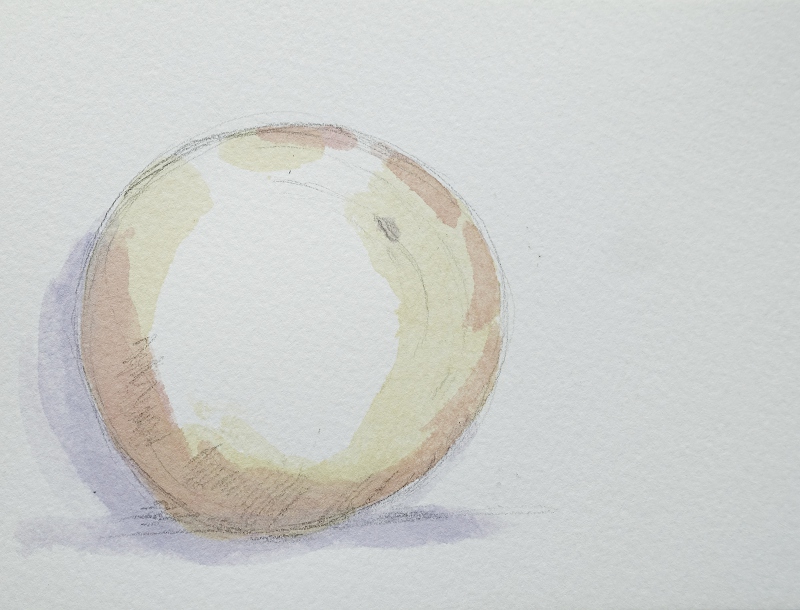
Start simply with a round shape. A simple outline in light pencil, with a few gestures about shadows and ground. Look how much of the paper remains, and the shadows are purple! But it is enough to show the viewer that it is an apple.
How few strokes are needed to make the apple real and solid and sitting on a hard surface!
Then I looked out tree sketches that were as close as I could get to what I see locally here – pine, cypress and fir. The page header is one example. I looked for the brush strokes, the colour combinations, and the simplification of the form. I was pretty certain that pine sketch of his was preparatory to an oil painting.
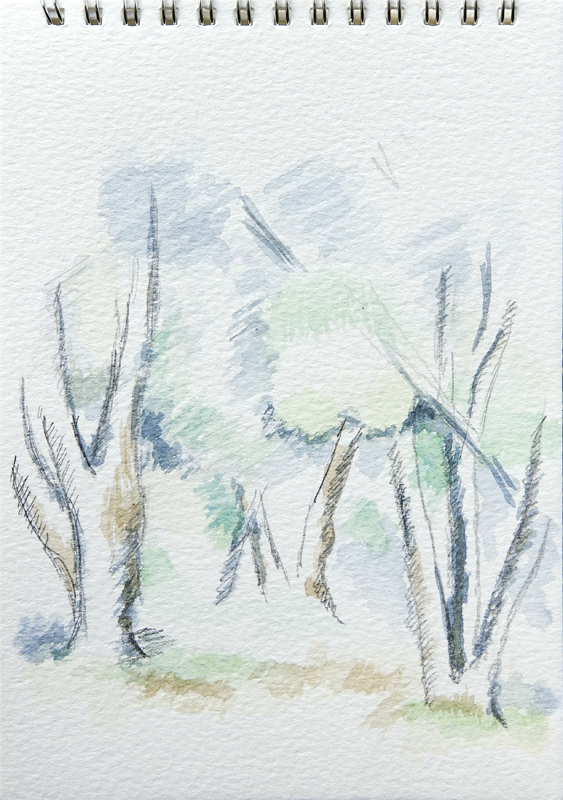
And I used so many sketches to simply learn by copying how the paint was applied, how foliage could be suggested, and how the colours worked together.
As I continued I was curious about the harmonies he achieved across even the simplest and most minimal sketch. There was more going on than I had realised at first!
Next I found another way to learn, another angle to approach the original. I included an extra step, which was to make a copy in pencil first, to begin to get an idea of the tonal qualities and colour values. I often lean toward softer, gentler colours!
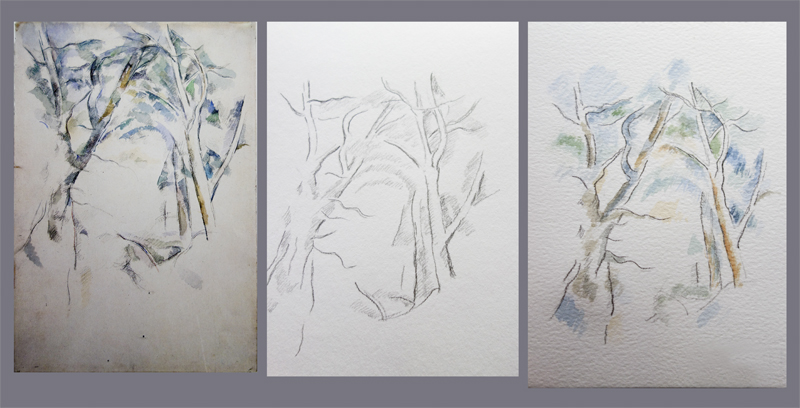
Then I decided to take the merest hints of colour, and try getting bolder. It certainly served to illustrate how clumsy my beginner strokes were!
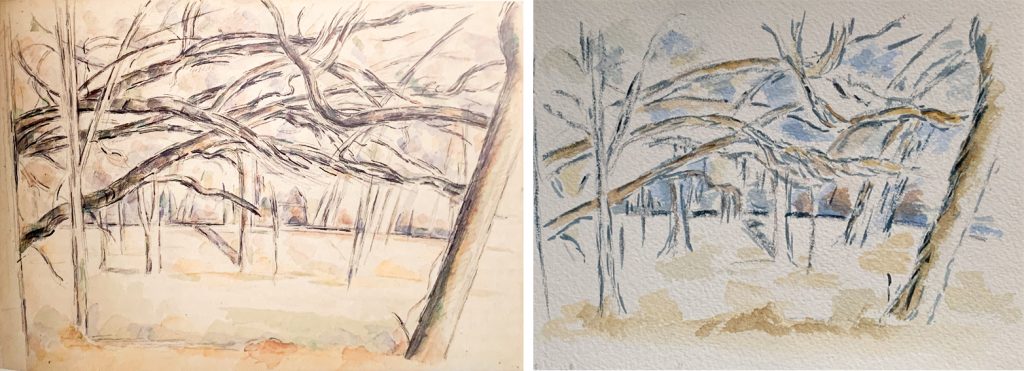
I was beginning to add and vary things within my copies. I wondered how to paint rocks here. Our local stone is granite. I realised that the palette would be quite different. I guessed that blues might dominate … so began to experiment with a landscape far removed from the Aix-en-Provence that Cezanne lived and worked in. My mountains and rocks are quite different!
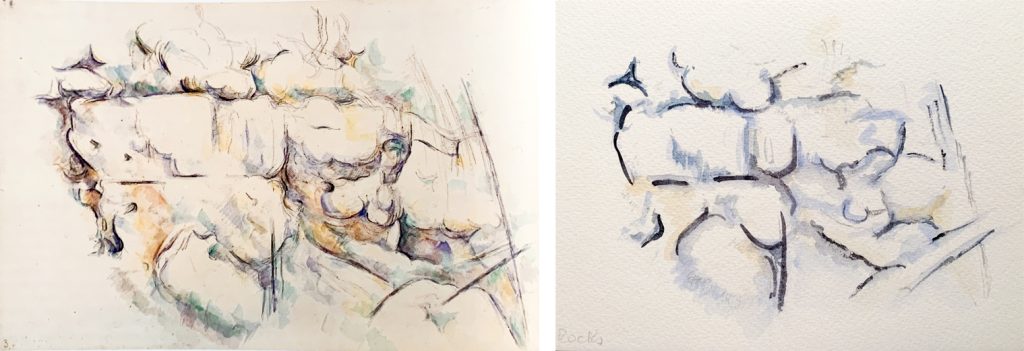
There is such wonderful complexity of Cezanne’s study of these rocks. I can only stare and admire!
But to conclude …. back to my attempts to simply copy and absorb!
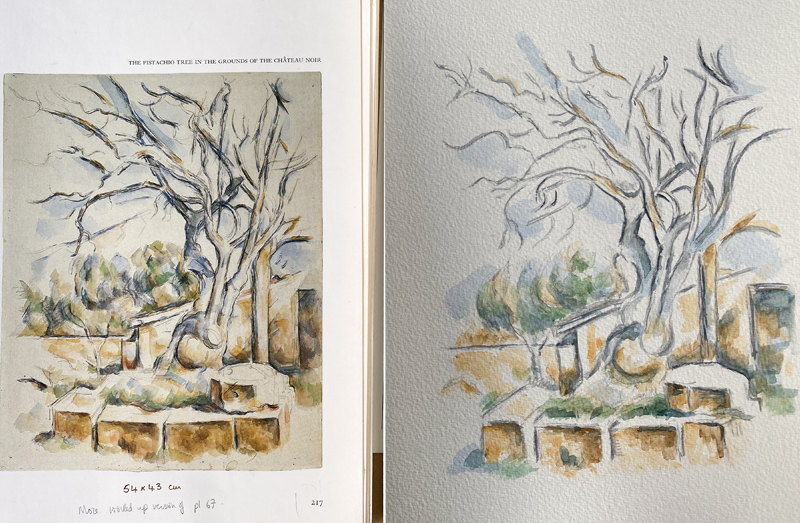
The colours are Provencal, the tree is Mediterranean, but the composition and colouring are stunning – so let’s simply enjoy copying!
On to Watercolour 3 – In the style of Cezanne
Back to the Watercolour cover page
Back to the Hands On cover page
Flickr holds Elisa’s online Photo Gallery
© 2021 Elisa Liddell



